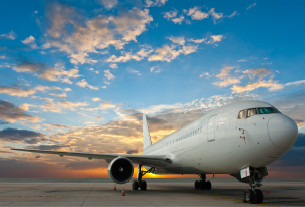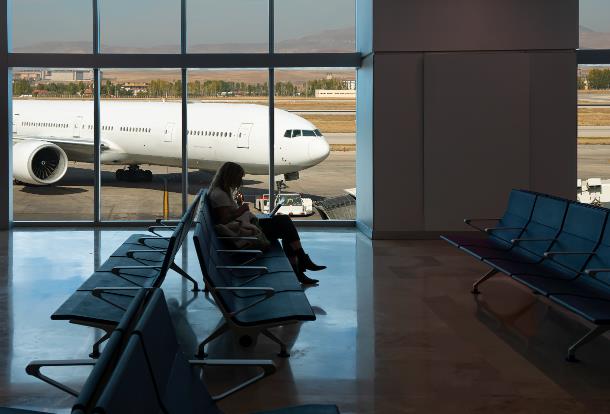ChinaTravelNews, Ritesh Gupta -Effective merchandising requires an apt blend of technology, people and skills, a mix that Chinese carriers need to build upon. With TravelSky’s acquisition of OpenJaw Technologies, one can only expect Chinese carriers to benefit from such a deal.
Airlines in China are attempting to embrace latest retailing techniques, but they still have a long way to go before they attain a healthy balance between monetization and delivering a superlative customer experience.
Various IT specialists, including ones that are running effective merchandizing initiates across the globe, too, have been vying for a piece of this market.
In a major development late last week, TravelSky Technology completed its acquisition of OpenJaw Technologies. The total transaction value is US$39.4 million. OpenJaw’s was previously owned by GuestLogix.
The deal comes at a stage when airlines in China acknowledge that there is a need to make their direct e-commerce channels much more customer-centric. Today, these channels are largely geared towards revenue maximization.
Speaking to ChinaTravelNews.com from Dublin, Ireland, Paul Byrne, OpenJaw’s Senior Vice President -Development, says as acknowledged by the industry at large, Chinese airlines, in general, are somewhat behind their Western counterparts in terms of their retailing and merchandising strategies. “For this very reason, the opportunity for Chinese airlines is great,” he said.
“Chinese airlines are bought in to the benefits that are realisable from adopting a merchandising strategy.
Like their Western counterparts, some airlines are as conservative and as siloed - these airlines will tend to take a risk averse approach to retailing and go for the quick wins requiring as little investment on their part as possible,” said Byrne. “Other airlines are much more innovative and will invest in the technology, people and skills required to put in place a `true’ merchandising strategy.”

Preparedness
As Byrne pointed out, having an apt blend of people, skills and technology is a necessity in order to utilise latest retailing techniques such as personalization and data-driven merchandising.
But this requires deep introspection as every airlines has to chart out its own roadmap in order to pave way for innovation.
“Unfortunately most of the airlines still lack the core infrastructure needed for innovation,” said Byrne.
“Innovation is about “adapting to change” and thus to innovate, airlines require core platforms that are highly flexible. Airlines are still using very inflexible platforms. These are either based on shared community models or platforms that requires a lot of development / programming to facilitate every change,” he said.
“To create and manage a rich omni-channel customer experience, airlines require platforms that provides extensive business model control (rules based) plus strong product and channel management capabilities. These platforms must have a modular open architecture that fosters a partner eco-system for collaborations. Structured and well defined APIs form a key requirement for collaboration and innovation,” added Byrne.
Critical decisions
Airlines need to take certain decisions, be it for how to go about their plans for merchandizing or how to gear up for bundling/ unbundling depending upon the readiness of the customer at this juncture.
“As in all markets, the Chinese customer will ultimately define what products airlines should merchandise - these will be products which bring value to the customer during their journey, reduce stress and make the journey more seamless and the experience more pleasant,” share Byrne. “Market research shows that the Chinese consumer is much more digital and mobile, requires instant gratification and is much more price sensitive. Chinese airlines are beginning to take more control of distribution to remedy the current situation where agents, OTAs and meta-search channels are heavily discounting their flights, and as a result, their brand value is being diminished. As airlines gradually take more control, they will have greater ability to take a Single Customer Value across all channels and deliver greater value to their customers.”
So Chinese carriers should create value from their air ancillary propositions in order to make them more compelling and they should offer personalised dynamic bundles of desirable ancillaries to relevant travellers. Say, frequent business traveller might be attracted to a bundle that includes seat upgrade, lounge access and WI-FI.
Other than this, airlines also need to work out an underlying architecture that is flexible and extensible in order to support new products or services.
Lastly, airlines need to ensure that merchandizing platform they opt for should let them independently manage their own product propositions (inventory, availability, price, product biasing, bundling, etc.) according to market demands and opportunities.
For their part, OpenJaw are very optimistic about delivering in this arena. Not only can they leverage TravelSky’s massive presence and deep-rooted association with major carriers in China, but they can also leverage their expertise that includes work done for Cathay Pacific, British Airways, S7 Airlines, Hainan Airlines, Kulula and others.
The company asserts that omni-channel support has been at the heart of the t-Retail Platform since day one; as a result, product content, pricing and inventory are all managed with in a single system. The direct channel, i.e. airline.com, consumes these product offerings in the same way as another channel or store-front such as those of third-party OTA partners. Channel-specific merchandising rules may be applied so the airline is in full control of what can be sold, in which channels and at what prices.
Technology should not hinder what products it is possible to merchandise on what channels. With a flexible and omni-channel platform, the business will decide that, which should create greater potential for success for the airline!




